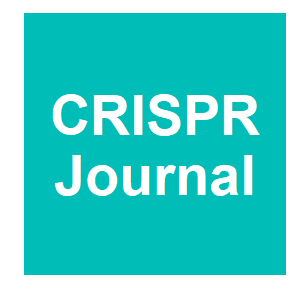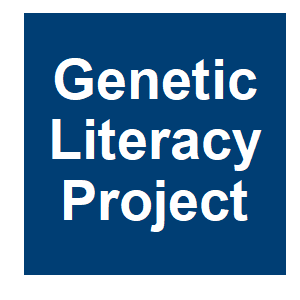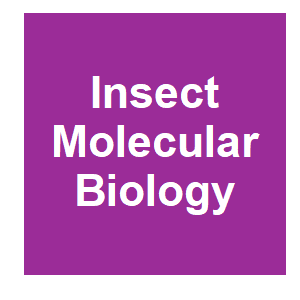
Keywords: diamondback moth

|
Development of CRISPR/Cas9-Mediated Gene-Drive Construct Targeting the Phenotypic Gene in Plutella xylostellaM. Asad, D. Liu, J. Li, J. Chen and G. Yang, Frontiers in Physiology, 13:938621. 2022.
The gene-drive system can ensure that desirable traits are transmitted to the progeny more than the normal Mendelian segregation. The clustered regularly interspersed palindromic repeats (CRISPR)/CRISPR-associated protein 9 (Cas9) mediated gene-drive system has been demonstrated ... Keywords: autocidal control, diamondback moth, genetic biocontrol, Oxitec, SIT, sterile insect technique |

|
Toward a CRISPR-Cas9-Based Gene Drive in the Diamondback Moth Plutella xylostellaX. Xu, T. Harvey-Samuel, H. A. Siddiqui, J. X. D. Ang, M. E. Anderson, C. M. Reitmayer, E. Lovett, P. T. Leftwich, M. You and L. Alphey, The CRISPR Journal, 5:224-236. 2022.
Promising to provide powerful genetic control tools, gene drives have been constructed in multiple dipteran insects, yeast, and mice for the purposes of population elimination or modification. However, it remains unclear whether these techniques can be applied to lepidopterans. ... Keywords: autocidal control, diamondback moth, genetic biocontrol, Oxitec, SIT, sterile insect technique |

|
Towards CRISPR/Cas9-based gene drive in the diamondback moth Plutella xylostellaX. Xu, T. Harvey-Samuel, H. Siddiqui, J. Ang, M. A. E. Anderson, C. Reitmayer, E. Lovett, P. T. Leftwich, M. You and L. Alphey, bioRxiv, 2021.10.05.462963. 2021.
Promising to provide powerful genetic control tools, gene drives have been constructed in multiple dipterans, yeast and mice, for the purposes of population elimination or modification. However, it remains unclear whether these techniques can be applied to lepidopterans. Here, we ... Keywords: autocidal control, diamondback moth, genetic biocontrol, Oxitec, SIT, sterile insect technique |

|
Genetically engineered moths may save kale chipsC. Poku, BIOtechNOW, 2020.
Sea salt kale chips, bacon brussels sprouts, and buffalo cauliflower wings are under threat. Environmental activists will have you believe the biggest threat to our food system is pesticides. That’s not true, in fact, it’s insects—the very reason most pesticides are ... Keywords: autocidal control, diamondback moth, genetic biocontrol, Oxitec, SIT, sterile insect technique |

|
Genetically engineered moths have been released into the wild to wipe out pestsK. Rogers, CNN, 2020.
Genetically modified diamondback moths designed to wipe out wild pest populations were released in fields for the first time in New York state. Diamondback moths are migratory pests found in the Americas, Europe, New Zealand and Southeast Asia, but especially in areas where ... Keywords: autocidal control, diamondback moth, genetic biocontrol, Oxitec, SIT, sterile insect technique |

|
Genetically modified butterflies could herald a new era in crop protectionScience News,, Science News, 2020.
New study highlights successful test including field release of genetically modified butterflies. Scientists believe this success could pave the way for an effective and sustainable approach to pest control in crops. The butterfly in question is the cruciferous moth ( Plutella ... Keywords: autocidal control, diamondback moth, genetic biocontrol, Oxitec, SIT, sterile insect technique |

|
World’s First Genetically Modified Moths Released to NatureM. Cage, SOMAG News, 2020.There are many insect species that harm agricultural products in the world. One of them is diamond moths. Genetically modified moths were used to control these moths, which are harmful to many plants. Plutella xylostella or also known as diamond moths; One of the most harmful ... Keywords: autocidal control, diamondback moth, genetic biocontrol, Oxitec, SIT, sterile insect technique |

|
GMO diamondback moth shows promise as sustainable pest control tool in first ever open-field releaseCornell University, Genetic Literacy Project, 2020.
A newly published study reports a successful, first-ever open-field release of a self-limiting, genetically engineered diamondback moth, stating that it paves the way for an effective and sustainable approach to pest control. The diamondback moth, also known as Plutella ... Keywords: autocidal control, diamondback moth, genetic biocontrol, Oxitec, SIT, sterile insect technique |

|
Scientists have released genetically modified mothsN. Kumar, The Times Hub, 2020.
In the US, the researchers decided to test emerging from genetic modification Diamondback moth, placing it in field conditions. The work was conducted by experts from new York, representing Cornell University. Keywords: autocidal control, diamondback moth, genetic biocontrol, Oxitec, SIT, sterile insect technique |

|
GM Insects on the HorizonE. Unglesbee, Progressive Farmer, 2020.
Diamondback moths would do well to be wary of potential mates in the years to come. Scientists recently completed the first successful field testing of a genetically modified (GM) "self-limiting" insect in the U.S., using this species. When the GM male diamondback moths are ... Keywords: autocidal control, diamondback moth, genetic biocontrol, Oxitec, SIT, sterile insect technique |

|
Male moths genetically modified to kill females released in the wildM. Le Page, New Scientist, 2020.
Genetically modified male diamondback moths designed to wipe out pest populations have been released in New York state. The field trial shows that these GM moths, whose female offspring die soon after hatching, could help control this major crop pest. Oxitec, the British ... Keywords: autocidal control, diamondback moth, genetic biocontrol, Oxitec, SIT, sterile insect technique |

|
First Field Release of a Genetically Engineered, Self-Limiting Agricultural Pest Insect: Evaluating Its Potential for Future Crop ProtectionA. M. Shelton, S. J. Long, A. S. Walker, M. Bolton, H. L. Collins, L. Revuelta, L. M. Johnson and N. I. Morrison, Frontiers in Bioengineering and Biotechnology, 7:1-15. 2020.
Alternative, biologically-based approaches for pest management are sorely needed and one approach is to use genetically engineered insects. Herein we describe a series of integrated field, laboratory and modeling studies with the diamondback moth, Plutella xylostella, a serious ... Keywords: autocidal control, diamondback moth, genetic biocontrol, Oxitec, SIT, sterile insect technique |

|
Identification and characterisation of a Masculinizer homolog in the diamondback moth Plutella xylostellaHarvey-Samuel, T., V. C. Norman, R. Carter, E. Lovett and L. Alphey, Insect Molecular Biology, 2019:2019. 2019.
Recently, a novel sex-determination system was identified in the silkworm (Bombyx mori) in which a piRNA encoded on the female-specific W chromosome silences a Z-linked gene (Masculinizer) which would otherwise initiate male sex-determination and dosage compensation. ... Keywords: autocidal control, diamondback moth, genetic biocontrol, Oxitec, SIT, sterile insect technique |

Contact
David O’Brochta
Foundation for the
National Institutes of Health
geneconvenevi@fnih.org
RSS

